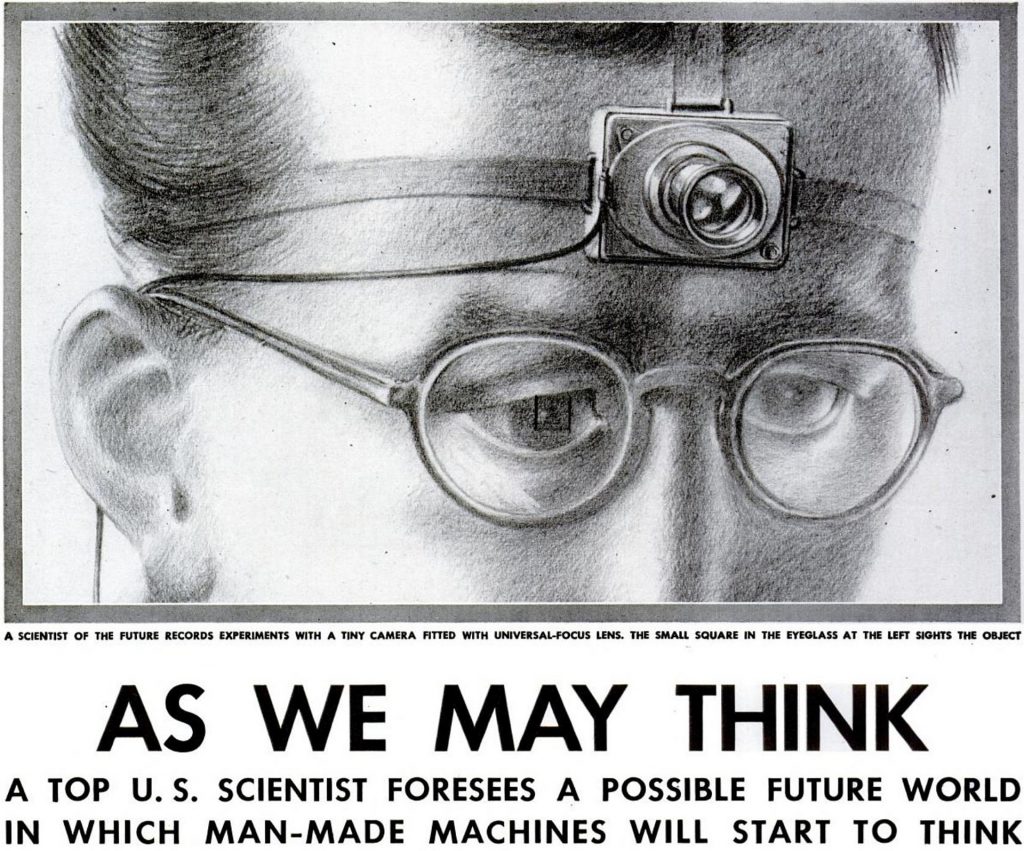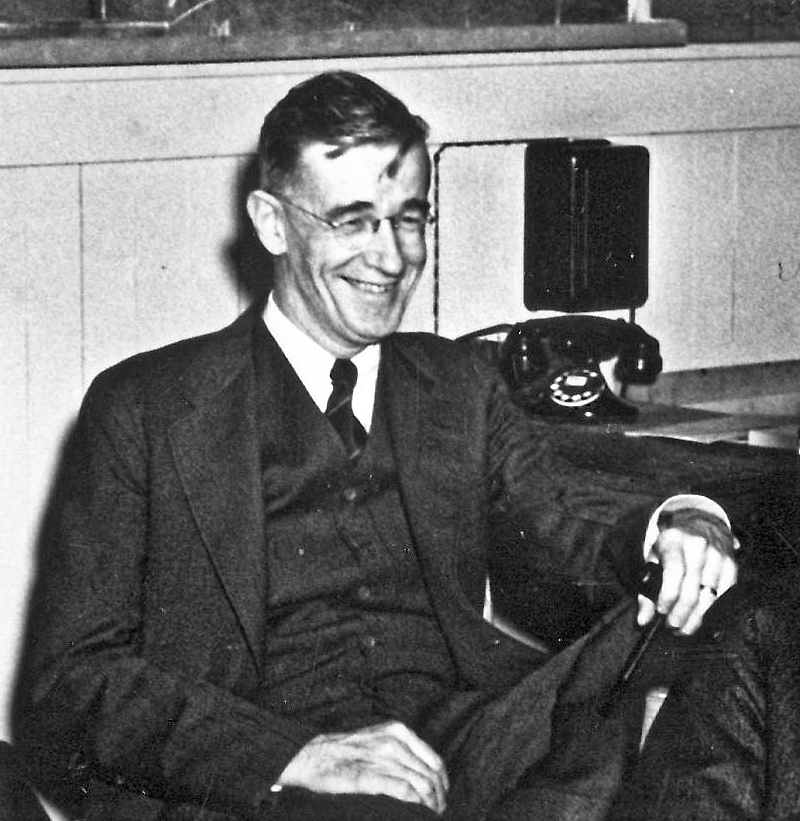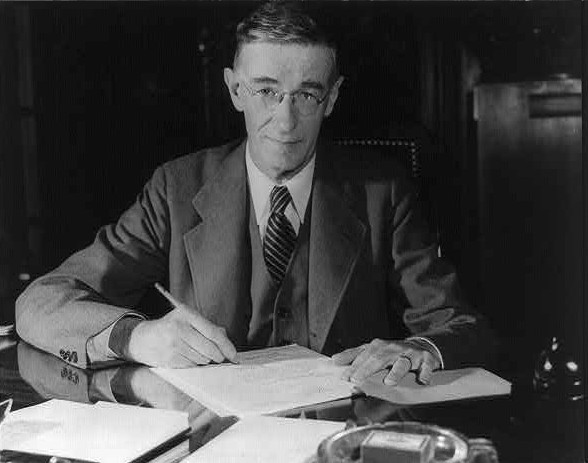American engineer, President Roosevelt’s scientific advisor, researcher at the Massachusetts Institute of Technology (MIT), president of the NACA (NASA’s forerunner), he is considered as one of the Internet’s pioneers… Let us introduce one of the major Web player: Vannevar Bush.
Born in 1890 in Everett, Massachusetts, Vannevar Bush joined the MIT campus in 1915 and claimed that he would complete his PhD in electrical engineering in just one year. Ambitious, yes, but realistic! Nine months later, he graduated from MIT and Harvard University. In 1919, he joined the MIT Electrical Engineering Department, where he would be a staff member for 25 years. In 1927, he was involved in the creation of the « product intergraph », an analogue machine used to solve basic differential equations. For more than ten years, this machine was recognised as the most powerful machine able to perform calculations. Later on, he and his team would build a ‘differential analyser’, the analogue computer’s ancestor, capable of solving simple equations. In Vannevar Bush’s eyes, the differential analyser is an ideal. It was said that this invention simply ‘thought’ through complexity.
In 1932, Vannevar Bush became president of the Carnegie Institute of Technology, America’s oldest private research institution, and held a seat on the NACA (NASA’s forerunner) advisory board. During World War II, the American government called on him. Vannevar Bush was in charge of the National Defense Research Committee (NDRC) organisation, whose objective was to conduct research and inform the armed forces about new technologies. He became President Roosevelt’s main scientific advisor. In addition to this role, he was named as director of the Scientific Research and Development Office. He was one of the masterminds behind the secret project of building the atomic bomb, known as the « Manhattan Project ».
But it was the article « As we may Think », published in 1945 in The Atlantic magazine, that made him famous to the general public. He put forward a theoretical approach to information structuring. For him, information is text that speaks about a single topic, and between several texts, there are links, whether or not they are topic-related. These links make it possible to browse from one piece of information to another. To cope with the explosion of information after the war, Vannevar devised a machine called « Memex », the aim of which was to extend human memory by enabling information to be properly organised. Let’s remember that at that time, computers, Internet and the Web did not exist! The engineer gave a glimpse of what could be the storage and the information restitution system. This theoretical thinking is the foundation of hypertext as well as the Web.

Director of the National Science Foundation (NSF) from 1950, he remained a member until 1955. He became President of the MIT Corporation from 1957 to 1959, then Honorary President until 1971.
Vannevar Bush passed away in June 1974 in Belmont, Massachusetts. His ideas, regarded nowadays as structuring, did not at first speak to anyone. He would be a source of inspiration for many researchers who, in turn, would take part in the Internet’s development.
To find out more about Vannevar Bush, here is some reading!
Vannevar Bush, « As We May Think », The Atlantic, 1945.
G. Pascal Zachary, « Endless Frontier : Vannevar Bush, Engine of the American Century », 1997

Translated by par N.PIQUERO.
Nicolas Piquero is a seasoned SEO with 6 years experience. He worked as an in-house, agency and freelance SEO, with various major european companies. Being both a yourtext.guru and babbar.tech power user, it was obvious that he could be an ambassador for babbar’s tools. So, being based in London, he is the first babbar ambassador for the UK.

